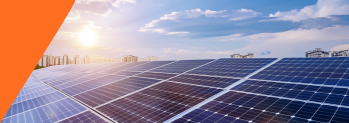Solar panel orientation is crucial as it directly affects the amount of sunlight the panels receive and, consequently, their energy production. The goal is to maximize the panels’ exposure to sunlight throughout the day, which increases the overall efficiency and effectiveness of your solar energy system.
Orientation vs. Tilt: What is the Difference?
While orientation refers to the direction your panels face, tilt is the angle at which they are inclined. Both orientation and tilt are crucial for optimizing energy generation. Orientation determines how long the panels are exposed to direct sunlight, while tilt affects how much of that sunlight is captured. An ideal setup combines the right orientation with the appropriate tilt, adjusted according to your geographical location, to maximize solar energy capture throughout the year.
Optimal Directions for Solar Panel Installation
How Roof Structure and Space Affect Solar Panel Placement?
While orientation refers to the direction your panels face, tilt is the angle at which they are inclined. Both orientation and tilt are crucial for optimizing energy generation. Orientation determines how long the panels are exposed to direct sunlight, while tilt affects how much of that sunlight is captured. An ideal setup combines the right orientation with the appropriate tilt, adjusted according to your geographical location, to maximize solar energy capture throughout the year.
Seasonal Adjustments
Seasonal changes significantly affect the sun’s position, which can influence the optimal tilt of your solar panels. In winter, the sun is lower in the sky, requiring a steeper panel tilt to capture more sunlight. Conversely, in summer, a shallower tilt is often more effective as the sun is higher.
Solar Tracking Systems
For those looking to maximize energy production year-round, solar tracking systems are an advanced option. These systems automatically adjust the orientation and tilt of the panels throughout the day and seasons, ensuring they are always at the optimal angle to capture the most sunlight. Although more expensive, tracking systems can significantly increase energy output, especially in regions with significant seasonal variations in sunlight.






